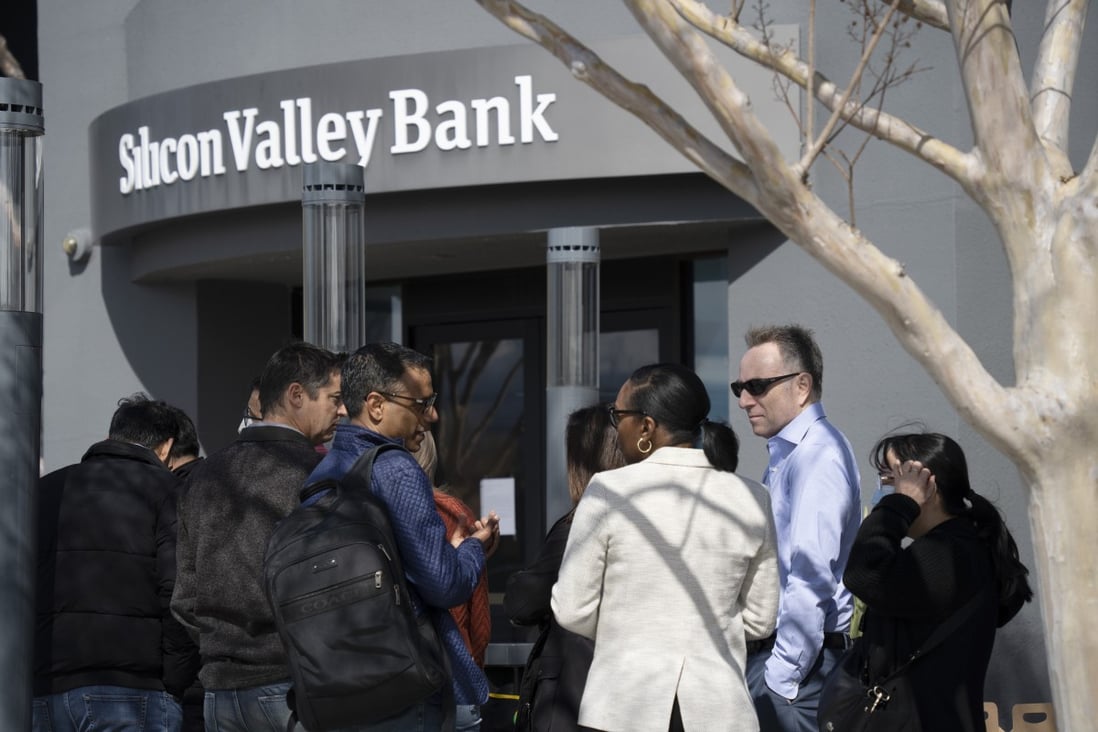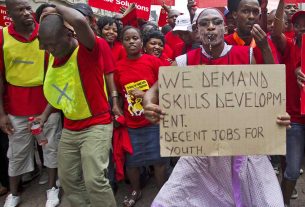Tue 21 March 2023:
Economists caution against comparisons to 2007-08 bank failures despite persistent market turmoil.
Following a series of shocking bank failures in Europe and the US over the past two weeks, there has been turmoil in the global banking industry.
After Silicon Valley Bank (SVB) collapsed on March 10, concerns about the stability of the global financial system persisted despite a number of rescue packages for troubled lenders and the assurances of governments and financial regulators.
Even though economists advise against drawing comparisons to the bank failures that led to the financial crisis in 2007–2008, investors are uneasy due to rumors that other financial institutions may soon experience problems.
What is behind the ongoing turmoil in the banking sector?

While US regulators hoped to shore up confidence by guaranteeing deposits at SVB and crypto-focused Signature Bank earlier this month, the collapse of Credit Suisse over the weekend reignited fears of contagion across the financial sector.
Unlike SVB, a mid-tier bank, Credit Suisse is a financial behemoth – big enough that it is among 30 banks considered to be of systemic importance to the global economy.
The Zurich-based bank held about $1.1 trillion in assets in 2021, according to S&P Global, making it the 45th largest lender in the world. By comparison, SVB, the 16th-largest bank in the US, had about $209bn in assets last year.
The bank’s sale to UBS on Sunday dealt a blow to Switzerland’s reputation as a haven of financial stability and caused volatility in the financial markets, despite the fact that Credit Suisse has been plagued by questions about its financial health for years as a result of a number of scandals.
While some bank stocks rose on news of the deal on Monday, big lenders, including HSBC and Standard Chartered, saw their share prices fall. On Tuesday, Asian stocks regained some ground in a sign of easing jitters, with the MSCI’s broadest index of Asia-Pacific shares outside Japan rising 0.4 percent.

First Republic, one of a number of regional US banks under pressure in recent days, saw its share price plunge nearly 50 percent amid fears the San Francisco-based lender could need a second bailout only days after receiving a $30bn lifeline from top US banks, including JPMorgan Chase, Bank of America and Wells Fargo.
Despite being intended to quell market panic, the nature of Credit Suisse’s takeover has also stirred unease.
The rescue plan allowed shareholders to keep about 3 billion Swiss francs ($3.2 billion) of their investment while Swiss authorities reduced the value of 16 billion Swiss francs ($17 billion) of bonds to zero.
With that decision, the long-standing rule in debt recovery that shareholders, not bondholders, should bear the brunt of losses was overturned, angering those who lost all of their investments.
Some bondholders have threatened legal action on the grounds that the action is illegal.
Iris Chiu, a professor of corporate law and financial regulation at University College London, warned that following post-2008 reforms that put shareholders on the hook for losses in order to spare taxpayers, banks may be more susceptible to “information contagion” and market panic.
“This means if a weak link is exposed, investors become paranoid about sniffing out other weak links in order to sell down assets or pull liabilities.” Chiu said.
“I think a large part of that has to do with the increase in ‘bail-inable’ debt that banks have issued to make their capital positions stronger – these place shareholders and creditors on the hook first before state bailout, and can make investors more sensitive during times of uncertainty. Bail in may unfortunately also exacerbate bank crisis perceptions and then leads to self-fulfilling prophecies regarding bank crisis.”
Concerns about the growth of additional institutions deemed “too big to fail” have also been raised by the combination of Credit Suisse and UBS, the largest bank in Switzerland.
Thorsten Beck, director of the Florence School of Banking and Finance, described the takeover as a “terrible idea, creating an even bigger too-big-to-fail institution”.
“But it shows again that all the talk about bail-in before the crisis is quickly forgotten when things turn south,” Beck said.
What can be done to stem the panic?
After several bank rescues already, there are indications that authorities are planning further actions to shore up confidence.
In the US, financial regulators are considering temporarily guaranteeing all bank deposits, which are currently protected up to only $250,000, Bloomberg News reported on Monday.
Similar actions to guarantee all deposits at SVB and Signature were announced by regulators after those lenders encountered difficulties earlier this month.
The possibility of moral hazard, where an investor or depositor is enticed to take bigger risks because they know they won’t lose anything, would be raised if protections were extended to all deposit
“I do think SVB is going to force a rethinking of the regulatory framework. The treatment of uninsured deposits is obviously a significant part of the problem,” David Skeel, a professor of corporate law at the University of Pennsylvania Law School said.
“They’re legally at risk, but banking regulators nearly always bail them out, dating back to the 1984 failure of Continental Illinois. This situation reminds me of the ‘constructive ambiguity’ as to whether big banks would be bailed out back in 2008, which proved to be disastrous. Expectation but no certainty of a bailout often works out badly. It seems to me that regulators need to develop clear guidelines as to which depositors will and won’t be protected.”
Democrats, including US President Joe Biden, have emphasized the need to tighten bank oversight in the long run, including by reintroducing important Dodd-Frank reforms that were reversed under the previous administration of President Donald Trump.
Among the changes being sought by Democrats, who would likely face resistance from Republicans, is the restoration of the $50bn threshold for “too big to fail” banks subject to stress tests designed to assess their ability to weather a serious economic downturn.
Could we be heading for a meltdown of the global banking system?
Most economists see that as unlikely, although turmoil at more financial institutions is possible.
Authorities not only acted quickly to contain the effects, but since the previous global financial crisis, financial regulation has also been significantly tightened. For instance, banks now need to have a lot more capital on hand to handle a severe downturn than they did in 2007-2008.
“The global banking system is not about to collapse,” Beck said. “What we see: with the tide receding, we see who has been swimming naked. Credit Suisse is not a surprise – given previous trouble – as are several of the mid-sized banks in the US. Could some other European banks be affected? Yes, possibly, but this would not be the same as a collapse. Overall, the banking system is significantly stronger than it was in 2008 and authorities are much better prepared to address distress early on.”
“The fallout from the SVB failure has been more sustained and widespread than I expected,” Skeel said. “I anticipated that it would blow over quickly given the idiosyncrasies of SVB, and that obviously hasn’t been the case. But I still don’t think it’s likely to spur a major banking crisis.”
By | AL JAZEERA
___________________________________________________________________________________________________________________________________
FOLLOW INDEPENDENT PRESS:
TWITTER (CLICK HERE)
https://twitter.com/IpIndependent
FACEBOOK (CLICK HERE)
https://web.facebook.com/ipindependent
Think your friends would be interested? Share this story!





